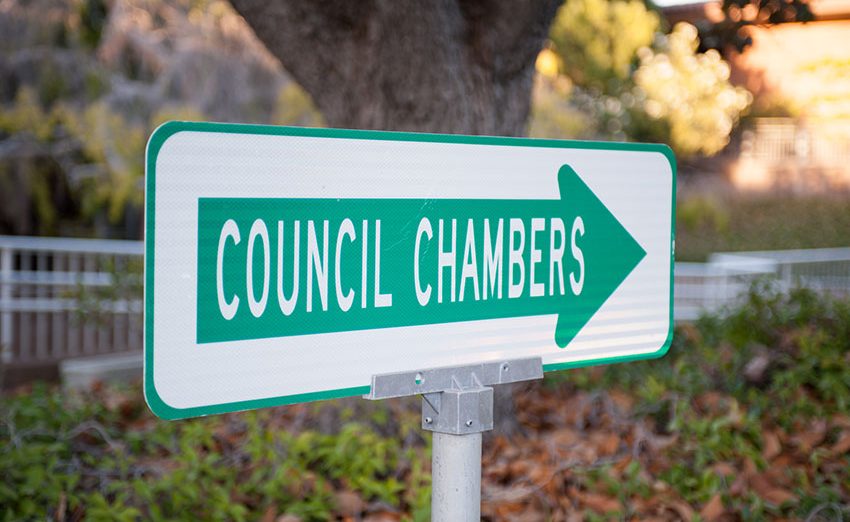Despite the budget-busting pandemic, Santa Clara’s Finance Department has been able to continue the project it began last year to make the City’s budget more human-friendly, and in May debuted a new format for the City’s Capital Improvement Program (CIP) budget.
“It’s important for the public to know how the City is using its taxpayers’ dollars,” said Santa Clara Finance Director Kenn Lee. “Through improvements to budget materials, the community can better understand the City’s capital infrastructure investments without needing a degree in finance.
“The presentation is more visually appealing, with images,” Lee continued, “and includes narratives that summarize project highlights and accomplishments, priorities and funding sources. Projects are also clearly identified as funded versus unfunded.”
In the past the CIP budget was organized by where the money came from — for example state funds, general fund — and the department spending it — for example, Parks & Rec, IT, streets.
Because multiple departments play roles in capital projects, it wasn’t easy to get the full picture for a project. The new format summarizes projects; showing funding, priorities and how projects will serve residents.
The new budget is organized around 12 categories or “themes:” Electric Utility, Parks and Trails, Sewer Utility, Solid Waste, Storm Drain, Technology and Equipment, Transportation, Water and Recycled Water Utilities, Administrative Facilities, Community Facilities, Convention Center, Other Community Projects.
Investments in Safety, Service and Community Goals
The City forecasts $515 million in capital project spending over the next five years, with $147 million in spending in the 2020-2021 fiscal year. Silicon Valley Power (SVP), Santa Clara’s publicly owned electric utility, accounts for the largest share of capital spending ($58 million). Second is the sewer utility ($41 million) and third is transportation ($22 million).
Capital projects are funded from the general fund’s capital projects reserve; federal, state and county programs; developer fees and contributions; customer charges; grants and donations; and debt.
SVP and the City’s sewer utility are largely funded by service charges and receive no money from the general fund; instead, returning a portion of their revenue to the general fund.
Projects planned for the coming year include:
- Rebuilding the Serra substation — some of its equipment is over 60 years old
- A new utilities administration center in the Civic Center that will save rent paid by SVP and free space in the overcrowded City Hall
- Electronic access to City-owned meeting rooms to simplify rentals
- Playground rehabilitation
- A pedestrian and bike trail between Homeridge Park, Bill Wilson, Jr. Park, and Central Park
- Rehabilitation and replacement of aging storm drains
- A new utility customer self-service portal
- Street improvements for ADA accessibility
- Improving crosswalks currently without traffic lights or signs
- A centralized water and sewer asset system for cost visibility, preventive maintenance and risk identification
- A permit information system to streamline permitting and increase accessibility of the information
- Sewer improvements and centralized water and sewer asset system for cost visibility, preventive maintenance and risk identification
The new budget also clearly shows the City’s nearly $300 million in unfunded projects over the next five years, their priority and value, and the money needed. Replacing the deteriorating 57-year-old International Swim Center with a new aquatics center — estimated at $90 million — isn’t funded and isn’t included in the current CIP plan.
Unfunded projects include;
- $105 million in improvements in parks grounds and buildings, included $2.3 million needed for improvements to the Central Park Arbor Area, a popular location for public and private events.
- $24 million in storm drain repairs and rebuilding
- $76 million in transportation infrastructure including traffic signal infrastructure, traffic control for uncontrolled crosswalks, pavement maintenance and bicycle and creek trail master plans
- $5 million in technology infrastructure including cyber-security and the City government network
- $20 million in City Library expansion and maintenance
- $60 million for maintaining and rebuilding City buildings including: a new City Hall, City Hall security upgrades, Fire Station 5 replacement, historic buildings, the corporation yard, ADA compliance, Triton Museum maintenance
- $12 million in Convention Center and garage repairs.
Beyond the five-year horizon, the City estimates there’s about $1 billion in unfunded infrastructure and maintenance needs.
“Long term funding strategies are needed to meet these infrastructure needs as the General Fund does not have sufficient funding to cover these capital costs,” Santa Clara City Manager Deanna Santana wrote in her budget summary.







